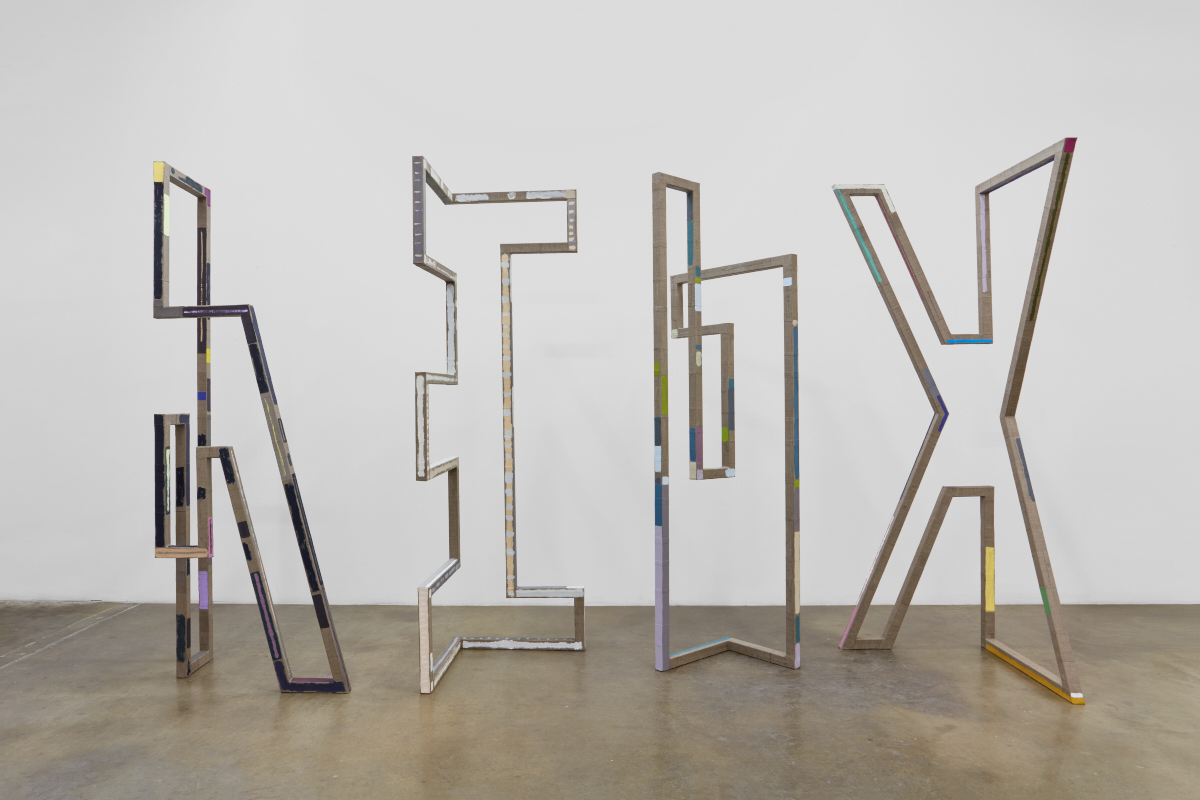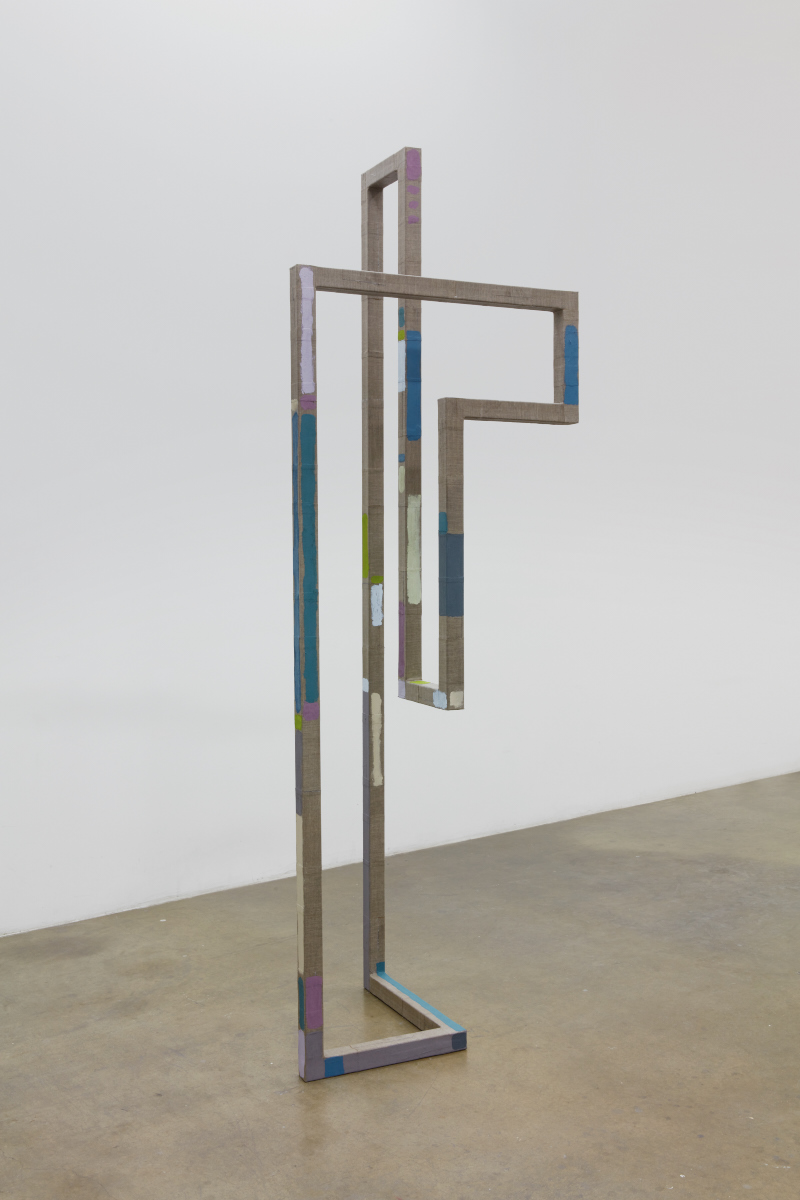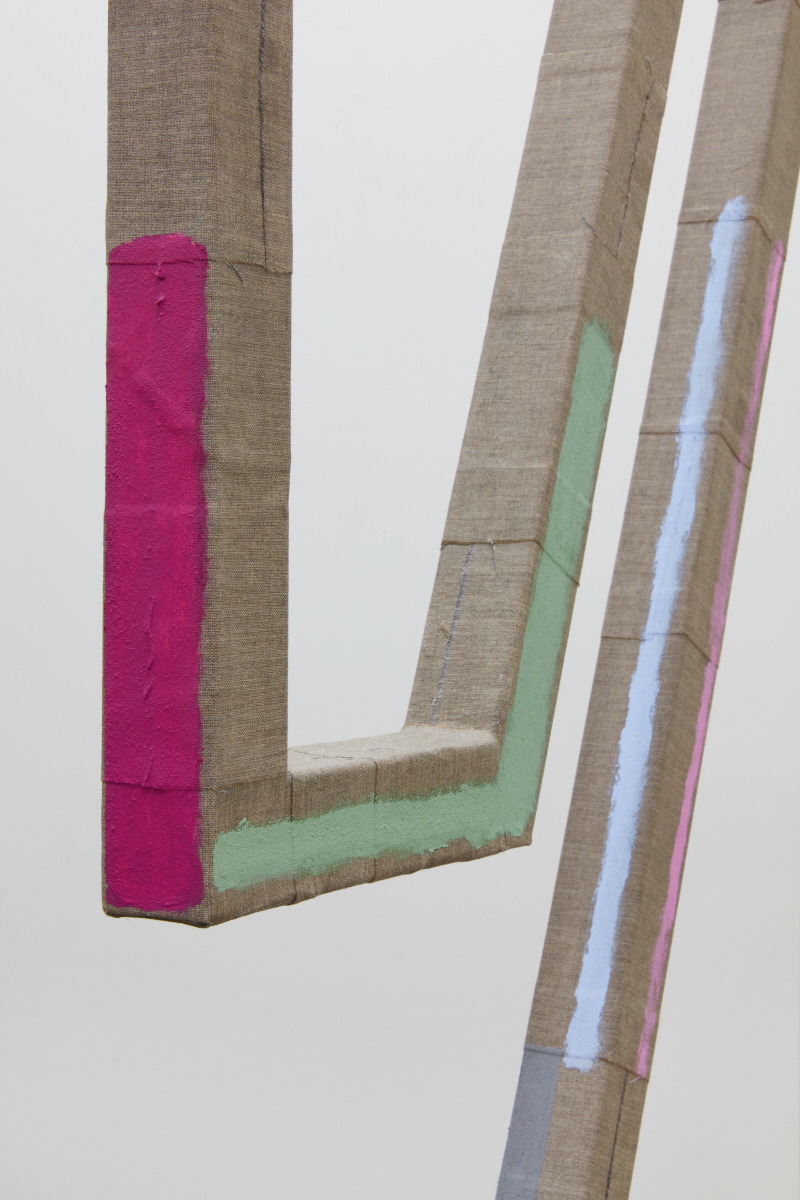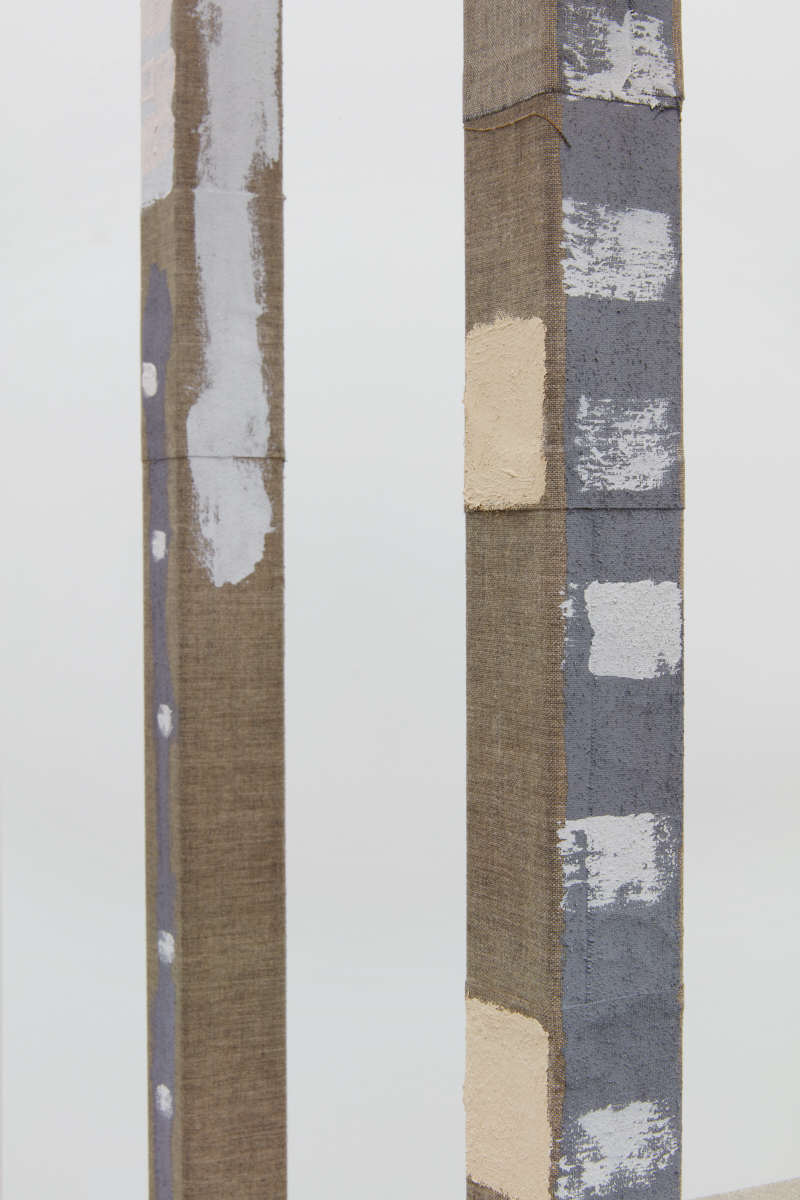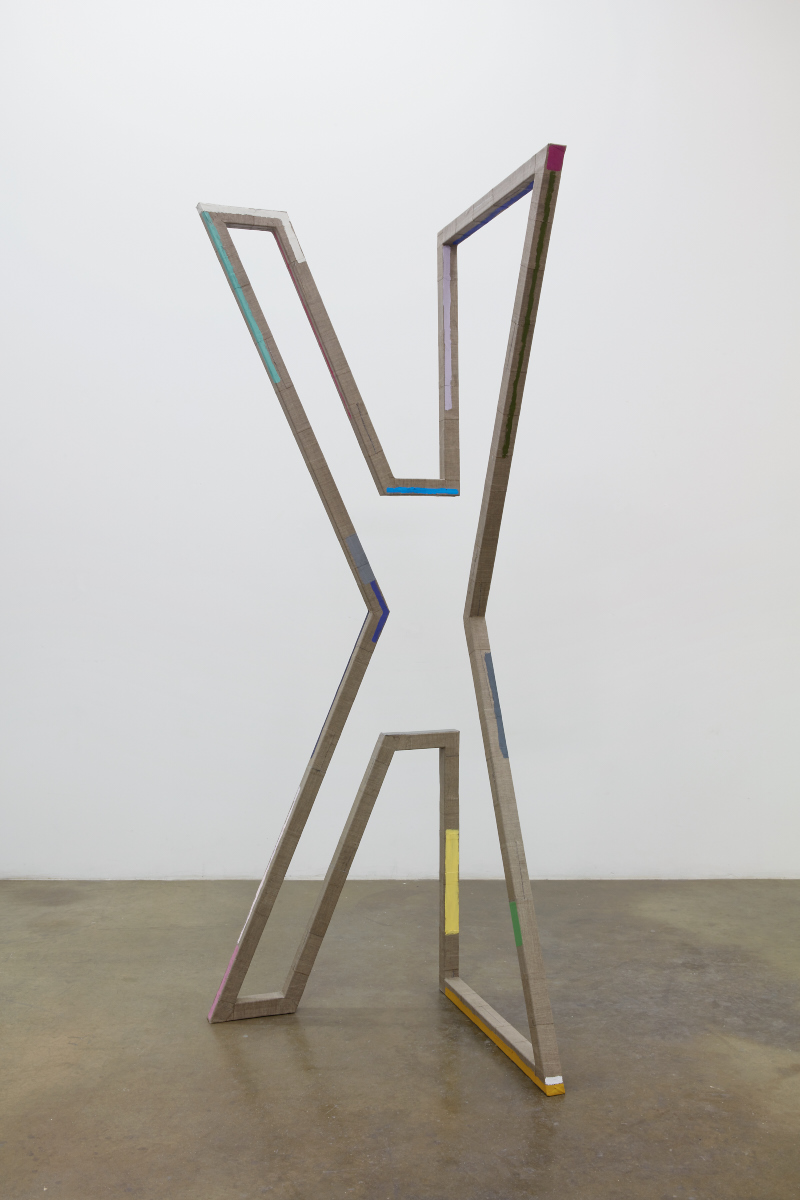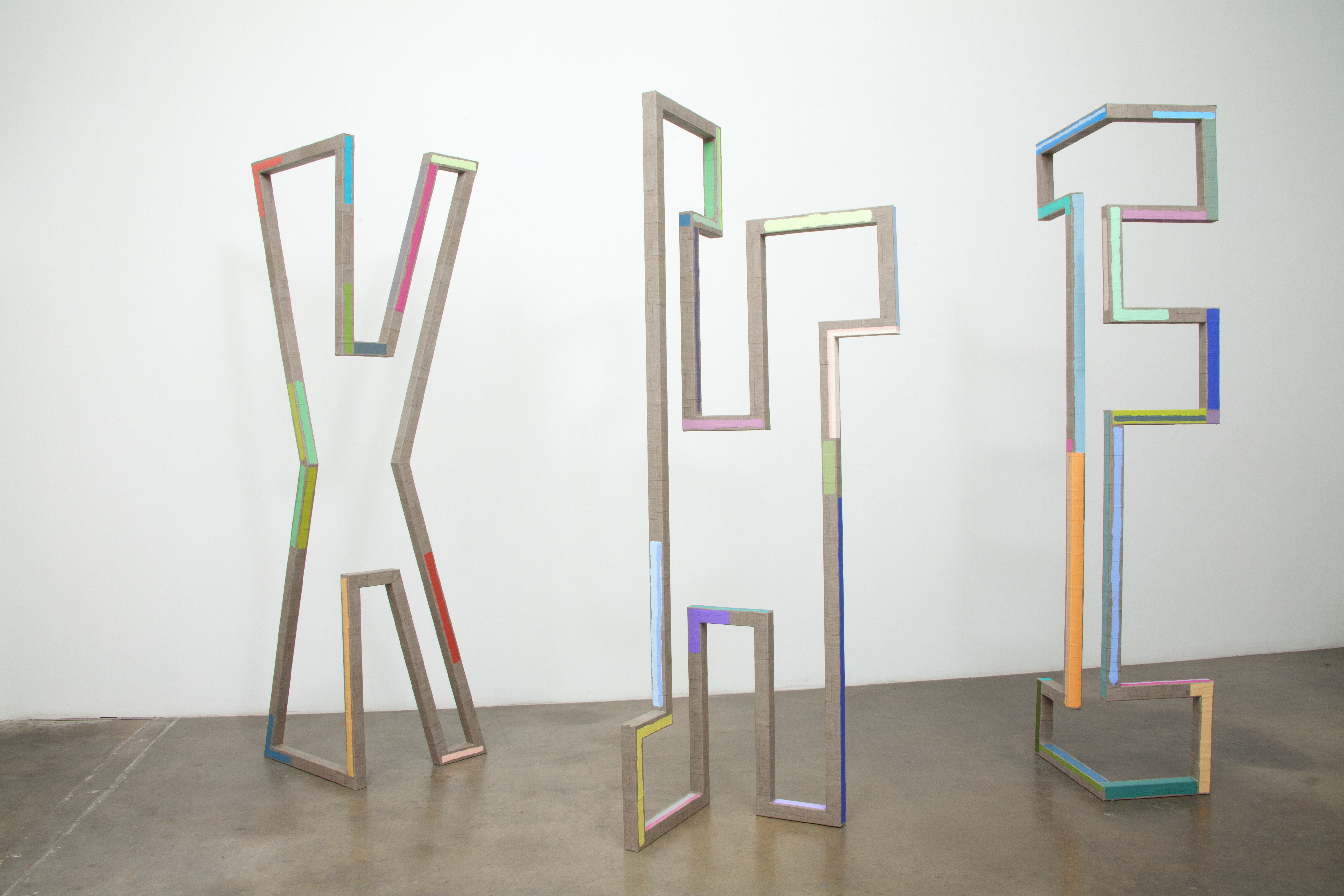Molly Larkey
LUIS DE JESUS LOS ANGELES
NADA New York
March 8 - 11, 2018Luis De Jesus Los Angeles is pleased to announce our participation in NADA New York 2018, with a solo presentation of new work by Molly Larkey that combines elements of sculpture, painting, fabric/fiber arts, architecture, and language.
Consisting of small and large-scale, linen-wrapped and hand-painted metal structures, Molly Larkey's new works embrace contradiction through the joining of opposing forces: figuration with abstraction; feminine with masculine; soft fabric with welded steel. Rooted in the physicality of sculpture but refusing to be held down into one category, the works use the fluidity of form and function to propose an alternative to binary systems. The works change shape and meaning as the viewer moves around them: a line becomes a symbol becomes a painted gesture becomes a figure becomes architecture. They also hint at representational forms, recalling early systems of art and language that abstracted familiar objects.
Every aspect of Larkey's work has a material and metaphorical relationship with real life structures. The steel square tubes that she welds are commonly used to make fences and gates - structures associated with enclosure, separation, confinement, and control of movement. Here, they are reconfigured to become dynamic and generative and open to multiple interpretations. Wrapping the works with linen also transforms the metal without negating its structural qualities. The linen fabric, in addition to its painterly associations, acts like a bandage applied by hand, bringing a sense of care and healing to the rigid structure.
The use of paint further animates the geometrical lines and straight edges of the structure. The wide-ranging colors, applied with various textures and qualities of line, create a musicality whose tones unfold as one moves around the piece, bringing together opposites and incorporating empty spaces as pauses. The resulting work encompasses contradictory impulses, colors, materials, and forms without negating or erasing one element in favor of another. It proposes that all voices and elements, even those in seeming opposition, are necessary to the whole.
For Larkey, sculptures are objects that convey meaning through their physical presence and thereby impact the way that a body can relate to the physical world. The shift in perspectives that occur with interaction embodies a subtle but powerful idea: structures that accommodate and celebrate movement can change perception and create possibility. In this way, Larkey's work points to the challenges of communication in our world and suggests a future free from fixed perspectives.
